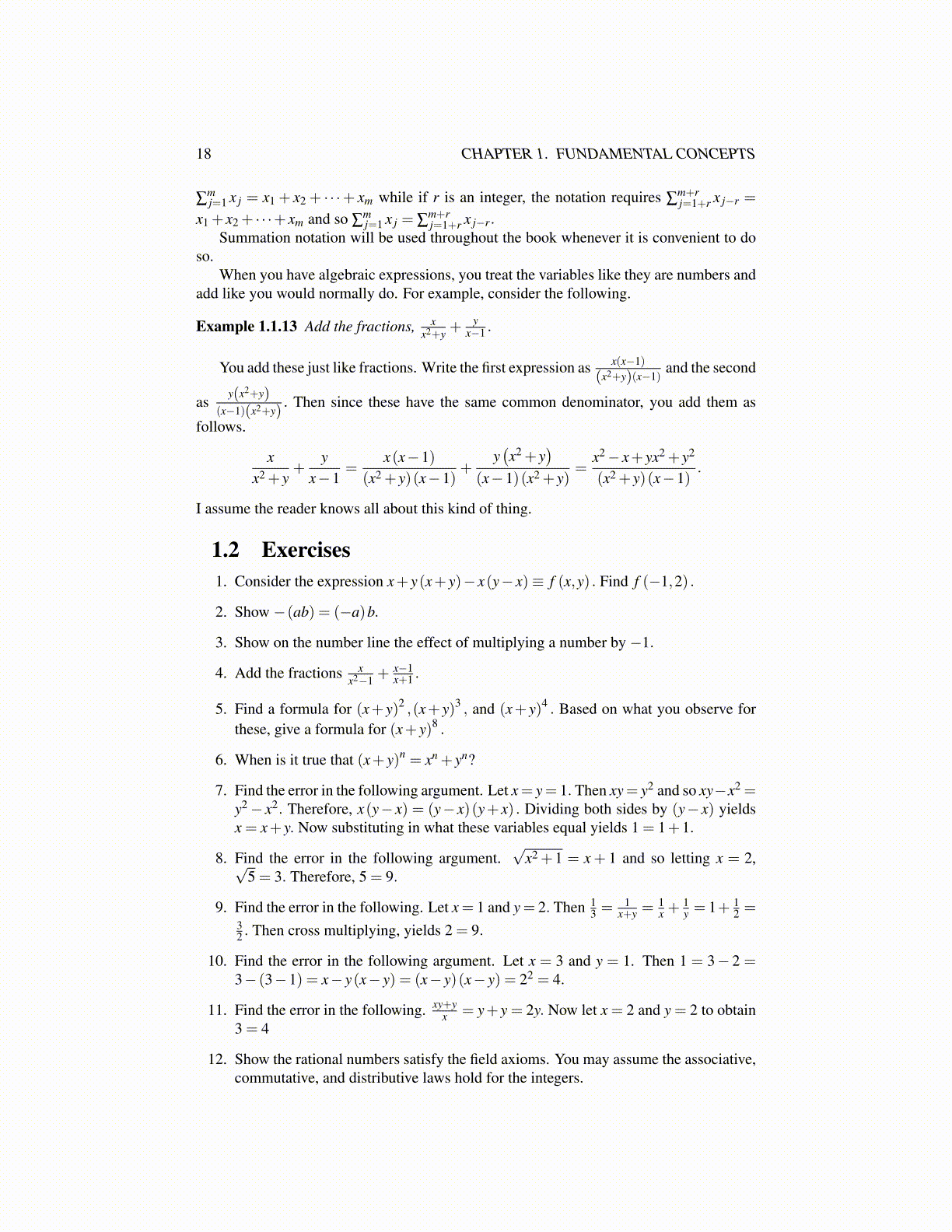
18 CHAPTER 1. FUNDAMENTAL CONCEPTS
∑mj=1 x j = x1 + x2 + · · ·+ xm while if r is an integer, the notation requires ∑
m+rj=1+r x j−r =
x1 + x2 + · · ·+ xm and so ∑mj=1 x j = ∑
m+rj=1+r x j−r.
Summation notation will be used throughout the book whenever it is convenient to doso.
When you have algebraic expressions, you treat the variables like they are numbers andadd like you would normally do. For example, consider the following.
Example 1.1.13 Add the fractions, xx2+y +
yx−1 .
You add these just like fractions. Write the first expression as x(x−1)(x2+y)(x−1)
and the second
asy(x2+y)
(x−1)(x2+y). Then since these have the same common denominator, you add them as
follows.
xx2 + y
+y
x−1=
x(x−1)(x2 + y)(x−1)
+y(x2 + y
)(x−1)(x2 + y)
=x2 − x+ yx2 + y2
(x2 + y)(x−1).
I assume the reader knows all about this kind of thing.
1.2 Exercises1. Consider the expression x+ y(x+ y)− x(y− x)≡ f (x,y) . Find f (−1,2) .
2. Show −(ab) = (−a)b.
3. Show on the number line the effect of multiplying a number by −1.
4. Add the fractions xx2−1 +
x−1x+1 .
5. Find a formula for (x+ y)2 ,(x+ y)3 , and (x+ y)4 . Based on what you observe forthese, give a formula for (x+ y)8 .
6. When is it true that (x+ y)n = xn + yn?
7. Find the error in the following argument. Let x= y= 1. Then xy= y2 and so xy−x2 =y2 − x2. Therefore, x(y− x) = (y− x)(y+ x) . Dividing both sides by (y− x) yieldsx = x+ y. Now substituting in what these variables equal yields 1 = 1+1.
8. Find the error in the following argument.√
x2 +1 = x + 1 and so letting x = 2,√5 = 3. Therefore, 5 = 9.
9. Find the error in the following. Let x = 1 and y= 2. Then 13 = 1
x+y =1x +
1y = 1+ 1
2 =32 . Then cross multiplying, yields 2 = 9.
10. Find the error in the following argument. Let x = 3 and y = 1. Then 1 = 3− 2 =3− (3−1) = x− y(x− y) = (x− y)(x− y) = 22 = 4.
11. Find the error in the following. xy+yx = y+y = 2y. Now let x = 2 and y = 2 to obtain
3 = 4
12. Show the rational numbers satisfy the field axioms. You may assume the associative,commutative, and distributive laws hold for the integers.